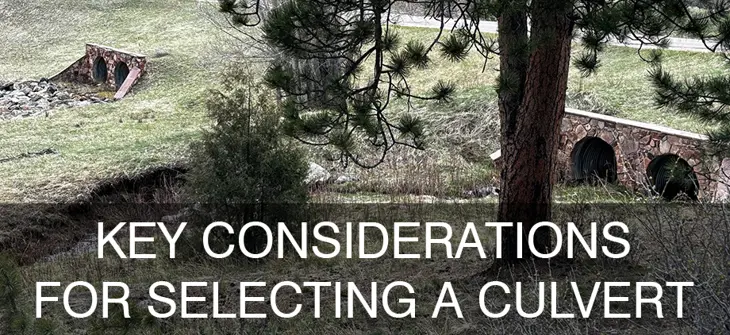
Key Considerations in Selecting a Culvert or Buried Structure
Choosing the right culvert or buried bridge structure is crucial for any site application. While this may seem straightforward, it involves numerous practical and functional considerations. Project engineers and site developers must address these factors early in the planning stages. This article outlines key questions that facilitate the decision-making process for selecting the appropriate structure type and shape.
Material Choices
Culverts and buried bridges come in various materials, shapes, and sizes. Common materials include:
- Corrugated Metal: Steel or aluminum, with various corrugation profiles
- Reinforced Concrete
- Plastic
Corrugated metal structures also offer multiple coating options such as galvanized steel, aluminum, aluminized steel, and coated steel. Selecting the appropriate material and coating involves considerations like durability, service life, environmental conditions, corrosion factors, and cost.
Determining Size, Shape, and Number of Structures
Once the material is selected, determining the size, shape, and number of structures for the site is the next step. Options include a single wide-span structure or multiple smaller structures. Simplify the process by focusing on the functional and practical needs of your site.
Functionality Considerations
- Primary Function: Is the structure for carrying stream flow and stormwater runoff or for grade separation under a roadway or railroad?
- Hydraulic Factors: What are the headwater and tailwater conditions and limitations?
- Flow Requirements: Is a single wide opening needed for flow and debris, or will multiple smaller culverts suffice?
Structural Design Considerations
- Headroom: What is the total available headroom, measured vertically from the stream bed or traffic surface to the ground surface above the structure?
- Live Load: What type of vehicles will cross the structure? Consider axle loads, tire/wheel type, and spacings.
- Depth of Cover: What is the required minimum depth of cover above the structure for the expected live loading?
Site Analysis and Evaluation
- Geotechnical Study: Has a geotechnical evaluation of the site been conducted?
- Foundation Bearing Capacity: What is the allowable bearing capacity under the structure? Can the foundation strength and stability be improved if needed?
Environmental and Regulatory Considerations
- Permitting and Regulations: Consider any site disturbance restrictions and right-of-way factors.
- Structure Type Preference: Determine if closed shape structures (with an invert/bottom) or arch-type structures (open bottom on footings) are more suitable.
Conclusion
These considerations are essential for selecting the right type, shape, and size of culvert or buried bridge structure. By addressing these questions, project engineers and site developers can make informed decisions that ensure the longevity, functionality, and regulatory compliance of their culvert or buried bridge projects.
